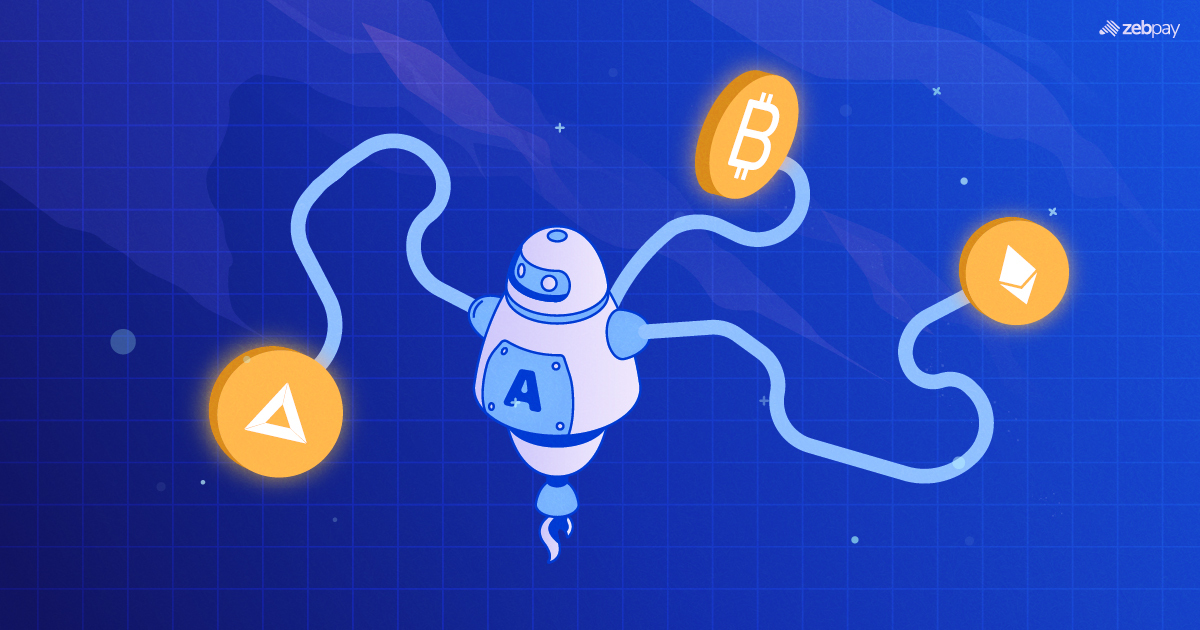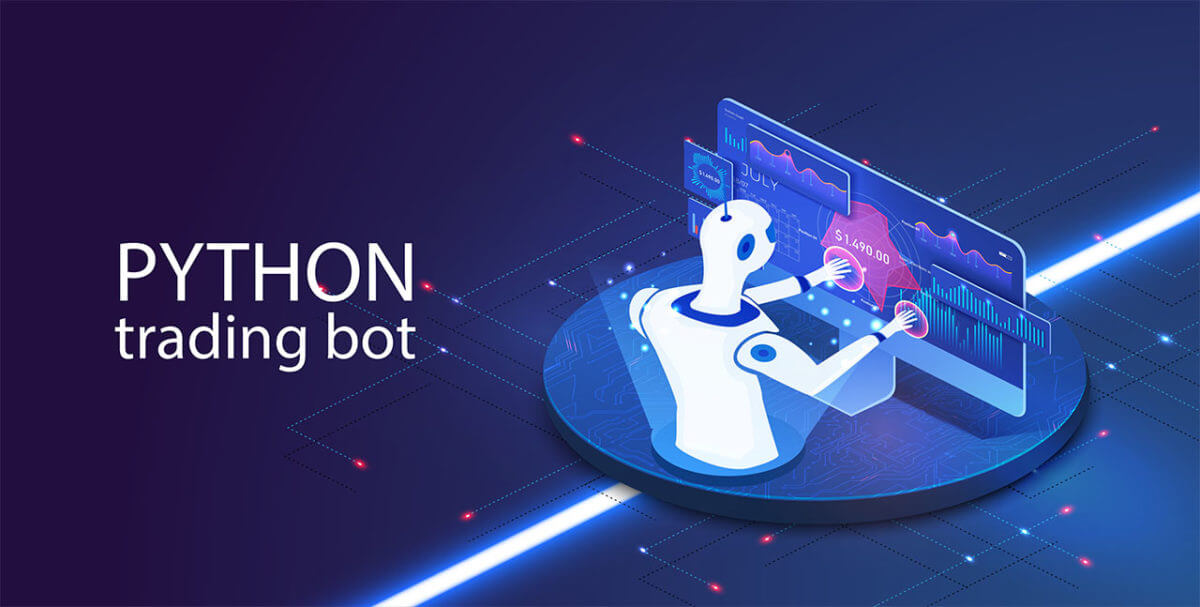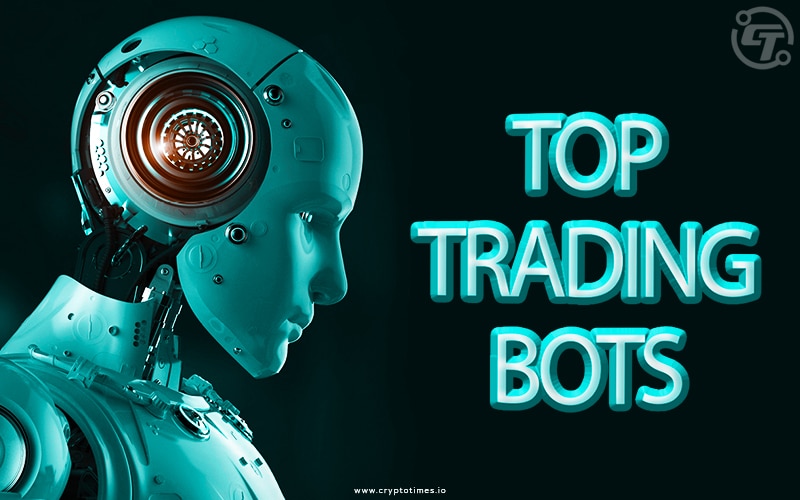
Algorithmic trading, also known as automated trading or algo trading, is the process of using computer algorithms to execute trades in financial markets. Algorithmic trading is typically used by large financial institutions, hedge funds, and investment banks, but it has become increasingly accessible to individual traders as well. Algorithmic trading is a powerful tool that allows traders to analyze market data, execute trades quickly and efficiently, and manage risk more effectively. Also, we’re going to know about how to create a Trading bot.
What is an Algorithmic Trading Bot?
An algorithmic trading bot is a computer program that is designed to execute trades automatically based on pre-programmed trading strategies. These bots are typically designed to monitor financial markets and execute trades when certain conditions are met.
For example, an algorithmic trading bot may be programmed to buy a stock when its price falls below a certain level, or to sell a stock when its price rises above a certain level. Algorithmic trading bots are often used to trade large volumes of stocks, bonds, and other financial instruments, and can execute trades much faster and more efficiently than human traders.

How does it work?
These bots use complex algorithms to analyze market data, such as price movements, trading volume, and other relevant metrics, and make trading decisions based on that data. When certain market conditions are met, the trading bot will automatically execute trades, without the need for human intervention.
Algorithmic trading bots can also be designed to manage risk by incorporating risk management strategies, such as stop-loss orders, to limit exposure to market volatility. This allows traders to execute trades much faster and more efficiently than if they were manually monitoring the markets and executing trades themselves.
Advantages and disadvantages of Trading bot:
Advantages:
- Speed and Efficiency: Algorithmic trading bots can execute trades much faster and more efficiently than human traders, which can be especially important in fast-moving markets.
- Accuracy and Consistency: Algorithmic trading bots are less prone to human error and can execute trades with a high degree of accuracy and consistency, which can help to reduce trading costs and improve overall performance.
- Analysis of Large Datasets: Algorithmic trading bots can analyze large datasets in a short amount of time, which can help traders to identify trends and make better-informed trading decisions.
- Automation: Algorithmic trading bots can run 24/7 without the need for human intervention, which can save time and effort.
Disadvantages:
- Complexity: Creating and maintaining an algorithmic trading bot can be a complex and time-consuming process, which can require a high level of technical expertise.
- Risk of Over-Optimization: Algorithmic trading bots can be over-optimized, which can lead to poor performance in real-world trading conditions.
- Technical Issues: Algorithmic trading bots can be susceptible to technical issues, such as hardware failures or network outages, which can disrupt trading activities and cause losses.
- Regulatory Compliance: Algorithmic trading bots may be subject to regulatory compliance requirements, which can vary depending on the jurisdiction in which they are used. This can add complexity and cost to the trading process.

Do it alone: Download an existing open-source bot
There are several ways that you can build a crypto trading bot. The cheapest and easiest approach is simply to find an open-source crypto bot that you can download and use straight away. This requires only a minimal amount of technical knowledge and helps to keep costs and development time to a minimum.
However, in order to build in your own features, continue development, and fix any bugs/security issues, etc., you will need to retain at least one expert software programmer. Since the bot has already been developed, the downside is that this approach often makes it harder to build in your unique features or adapt its trading algorithm.
Best open source crypto bots:
Creating an Algorithmic Trading Bot:
Creating an algorithmic trading bot can seem like a daunting task, but it is actually much easier than you might think. In this section, we will walk you through the steps involved in creating an algorithmic trading bot.
Step 1: Define Your Trading Strategy
The first step in creating an algorithmic trading bot is to define your trading strategy. Your trading strategy should be based on a thorough analysis of market data, including historical price data, trading volume, and other relevant metrics. You should also consider your risk tolerance, investment goals, and other factors that may influence your trading decisions.
Once you have defined your trading strategy, you can begin to create the rules that your algorithmic trading bot will follow. For example, you may decide to use a moving average crossover strategy, which involves buying or selling a security when its short-term moving average crosses above or below its long-term moving average.
Step 2: Choose a Programming Language
The next step in creating an algorithmic trading bot is to choose a programming language. There are many programming languages that can be used to create trading bots, including Python, Java, and C++. Python is a popular choice for algorithmic trading because it is easy to learn and has a large community of developers who have created many useful libraries and tools.
Step 3: Gather Market Data
Once you have chosen a programming language, you will need to gather market data to feed into your algorithmic trading bot. There are many sources of market data, including free and paid data feeds. You may also need to use an API to access real-time market data from exchanges.
Step 4: Implement Your Trading Strategy
Once you have gathered market data, you can begin to implement your trading strategy in code. You will need to create algorithms that can analyze market data and make trading decisions based on your trading strategy. You may also need to incorporate risk management strategies to limit your exposure to market volatility.
Step 5: Backtest Your Trading Strategy
Before you can begin using your algorithmic trading bot in real-world trading, you will need to Backtest your trading strategy. Backtesting involves simulating your trading strategy using historical market data to see how it would have performed in real-world trading. Backtesting can help you identify flaws in your trading strategy and make adjustments to improve its performance.
Step 6: Connect Your Bot to an Exchange
Once you have backtested your trading strategy and are satisfied with its performance, you can connect your algorithmic trading bot to an exchange. Many exchanges provide APIs that allow you to connect your trading bot and execute trades automatically. You may also need to consider security measures to protect your trading bot and your assets.
API links for main currency exchanges:
Popular trading bots
There are many different trading bots available in the market, and some of the most popular ones include:
-
3Commas
3Commas offers a smart trading terminal and auto trading bots. It supports a wide number of cryptocurrency exchanges. This includes popular exchanges like Binance, Bitfinex, Bittrex, BitMEX, Coinbase Pro, Bybit, OKEx, Bitstamp, etc.
3Commas supports various trading algorithms, furthermore, it helps in portfolio management. This app supports paper trading. Apart from automated bots, 3Commas offers public APIs. Developers can integrate them with their apps using the API keys provided by 3Commas.
-
Cryptoshopper: A prominent choice for managing arbitrage, backtesting, etc.
Cryptoshopper is among the more popular crypto trading bots. Whether you want to backtest your trading or manage all your exchange accounts, this platform can help. Automation apart, Cryptoshopper helps you to understand the technical indicators.
Cryptoshopper helps you to judge when you can take a profit. It helps you in rebalancing your portfolio, managing your stop-loss orders, and any other relevant functionality. Cryptoshopper supports all key cryptocurrency exchanges.
You might prefer trading pairs involving Bitcoin (BTC), Ethereum (ETH), or Ripple (XRP). Customizable platforms like Cryptoshopper can help you to manage your preferences well.
-
QuantConnect:
QuantConnect is a cloud-based algorithmic trading platform that offers a variety of tools for creating and testing trading bots. It supports multiple programming languages, including Python and C#.
-
HaasOnline:
HaasOnline is a cryptocurrency trading platform that offers a variety of tools for creating and testing trading bots. It includes a drag-and-drop visual editor for creating bots without any programming knowledge, as well as support for custom scripting in JavaScript.
-
Zignaly:
Zignaly is a cloud-based cryptocurrency trading platform that offers a variety of tools for creating and managing trading bots. It includes a visual editor for creating bots without any programming knowledge, as well as support for custom scripting in JavaScript.
Types of Crypto Trading Bot Strategies
Crypto trading bot strategies are specific trading algorithms designed for use in the cryptocurrency markets. These strategies are programmed to analyze market data, identify profitable trades, and execute trades automatically. There are several types of the crypto trading bot strategies, including:
- Market-Making Strategies: These strategies involve placing orders on both the buy and sell side of an asset in order to provide liquidity and earn a profit from the bid-ask spread.
- Arbitrage Strategies: These strategies involve identifying price discrepancies between different exchanges or markets, and then buying an asset on one exchange and selling it on another for a profit.
- Technical Analysis Strategies: These strategies use technical indicators, such as moving averages or relative strength index (RSI), to analyze market data and make trading decisions.
- Sentiment Analysis Strategies: These strategies use natural language processing (NLP) techniques to analyze social media and other online sources for sentiment data, which can then be used to make trading decisions.
- Trend Following Strategies: These strategies involve analyzing historical price data to identify trends and make trading decisions based on the direction of the trend.
- Machine Learning Strategies: These strategies use machine learning algorithms to analyze large datasets and identify patterns that can be used to make trading decisions.
Overall, there are many different types of crypto trading bot strategies, and traders can choose the strategy that best fits their trading style and goals. It’s important to note that no trading strategy is foolproof, and traders must continuously monitor and adjust their strategies to adapt to changing market conditions.

Key considerations to remember when developing a trading bot
- Strategy: A trading bot’s performance depends on the trading strategy it uses. The strategy should be thoroughly researched and backtested to ensure its viability in different market conditions.
- Data: The trading bot’s effectiveness depends on the quality and availability of the data used. The bot should have access to real-time market data, including price, volume, and other relevant indicators.
- Programming: The trading bot should be programmed with robust code that can handle various market conditions and unexpected events. It is essential to thoroughly test the bot’s code to ensure it works as intended.
- Risk Management: It is crucial to implement proper risk management measures to avoid significant losses due to market volatility or other unexpected events. This includes setting stop-loss orders, position size limits, and other measures.
- Security: The bot should be developed with security in mind to prevent unauthorized access and protect sensitive data. Encryption and other security measures should be implemented where necessary.
- Platform compatibility: The trading bot should be compatible with the trading platform it will be used on. It is important to check the platform’s API documentation and any restrictions or limitations that may apply.
- Maintenance: The trading bot should be regularly maintained and updated to ensure it continues to function correctly as market conditions and trading platforms evolve.Keeping these considerations in mind will help ensure the development of a robust and effective trading bot.
FAQ
What is a crypto trading bot?
It is a software application that allows automated trading in cryptocurrencies. The most simple crypto trading bots simply buy and sell currencies according to preset pricing changes while the advanced bots use artificial intelligence to improve their trades to maximize profits.
How do you code a crypto trading bot?
- Define programming language
- Define APIs
- Set up infrastructure
- Define trading bot strategy and architecture
- Onboard developers
- Outline sprints
- Start building
What is the best trading bot for Cryptocurrency?
Cryptohopper is a great crypto trading bot.
Conclusion
In summary, while algorithmic trading bots offer many benefits, they also come with potential downsides that traders should carefully consider. Traders should weigh the benefits and risks of algorithmic trading bots and ensure that they have the necessary technical skills and expertise to create and maintain a successful bot.




